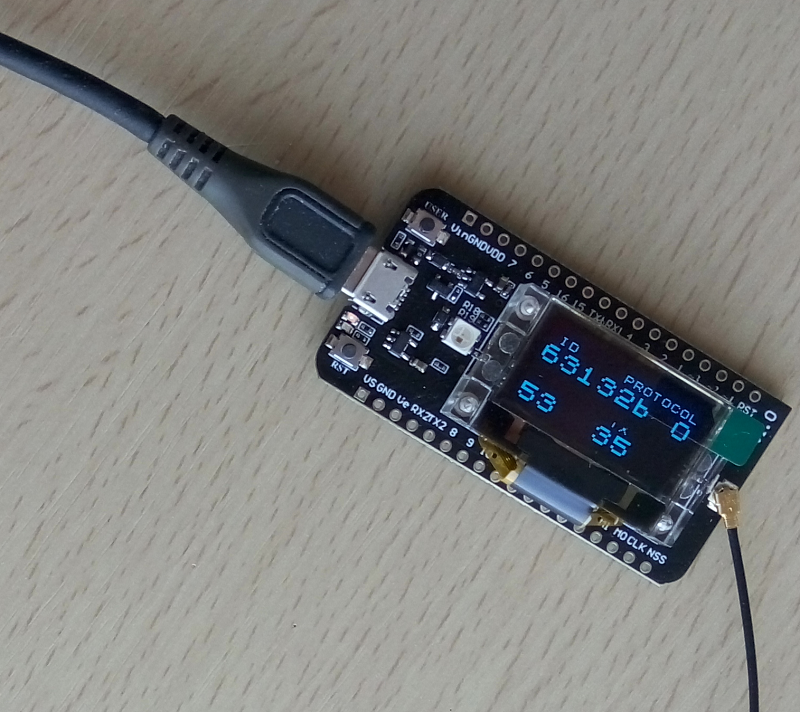Yeah thats the one - what region are you in?
EU-region, I live in The Netherlands (868).
OK, was just wondering if you needed to account for sub-bands
Thanks for helping Paul.
I am in NL using TTN and have a working HTCC-AB01 Dev-Board and HTCC-AB02A 1/2AA Dev-Board…
CubeCell-GPS ( HTCC-AB02S ) is known to operate well with BASICMAC (successor of LMIC) port for Arduino:

Radio settings for the CubeCell are:
#include <board-config.h>
// CubeCell-GPS SX1262 pin mapping
lmic_pinmap lmic_pins = {
.nss = RADIO_NSS,
.tx = LMIC_CONTROLLED_BY_DIO2,
.rx = LMIC_UNUSED_PIN,
.rst = RADIO_RESET,
.dio = {LMIC_UNUSED_PIN, RADIO_DIO_1, LMIC_UNUSED_PIN},
.busy = RADIO_BUSY,
.tcxo = LMIC_CONTROLLED_BY_DIO3,
};
How does this cope with CubeCell’s integrated LoRaWAN (LoRaMac-node) support?
Doesn’t this bite each other?
Thanks Willem. If needed I’ll ask you for the sketch 
CubeCell’s proprietary LoRaWAN library gets (automatically) excluded at build time by GNU linker - because none of BASICMAC’s functions are referencing onto it.
So far I didn’t succeed combining the sketches LowPower_WakeUpByTimer.ino and LoRaWan.ino until I came across the February 8th posting of bluejedi (see attachment). It would be great if the sketch would automatically go into deep sleep like bluejedi described.
Unfortunately I cannot check if ithis is correct, can someone confirm that to me? Or do you, bluejedi, have more information about this?

Why are you not able to check that LoRaWan.ino enters deep sleep automatically?
Do you want someone to confirm that you cannot check? ![]()
More information is right below the post that you referenced:
There is not much more to add to that. I just used the example and measured current during operation.
It’s been quite a while since I experimented with CubeCell. The version of the CubeCell Arduino core and the example may have been updated since but I assume that it will still work like the version I tested. You can find the LoRaWan.ino example in the Arduino packages/CubeCell/hardware/CubeCell/<version>/libraries/LoRa/examples/LoRaWAN/LoRaWan folder.
Please don’t post screen copies of other posts but insert a link to the post instead. The URL to a post can be copied using the link icon below the post.
If you want to reference a user just put an ampersand in front of its name like @bluejedi (but not boldface it).
Thanks. You (and Heltec) saved me a lot of time 
I want to get started with The Things Network and this board seems like the best budget option however, I’m not sure whether I should go for the CubeCell Dev-Board or CubeCell Dev-Board Plus, the Plus seems to feature the higher powered SX1262 chip so should offer better range?
What version is easiest to get set up and connected to the network?
HTCC-AB02 in addition has a display and more IO ports than HTCC-AB01 and is therefore more versatile.
Read the topic start. All current CubeCell boards have an embedded SX1262.
Should not make any difference.
Oh cool, I don’t know where I got the idea that the HTCC-AB01 was using the SX1261 it might have been an old aliexpress listing.
What is the recommended capacity for solar panel and battery to pair with the HTCC-AB01 and BME680?
I understand the battery should be a 3.7V SH1.25-2 LiPo and the solar panel must be 5.5V-7V, but I’m not sure about the exact capacity and wattage.
Probably need some more info.
How often are you taking a measurment and are you going to sleep between readings/sending data?
I don’t directly have answer for capacity but ‘SH’ connector is incorrect. See this post for more info:
Also take care to put a diode between the solar panel and the board:
I really don’t know maybe every 5 minutes and I would like a 1 day battery buffer?
What diode do I need or how do I calculate what diode I need?
Cheers